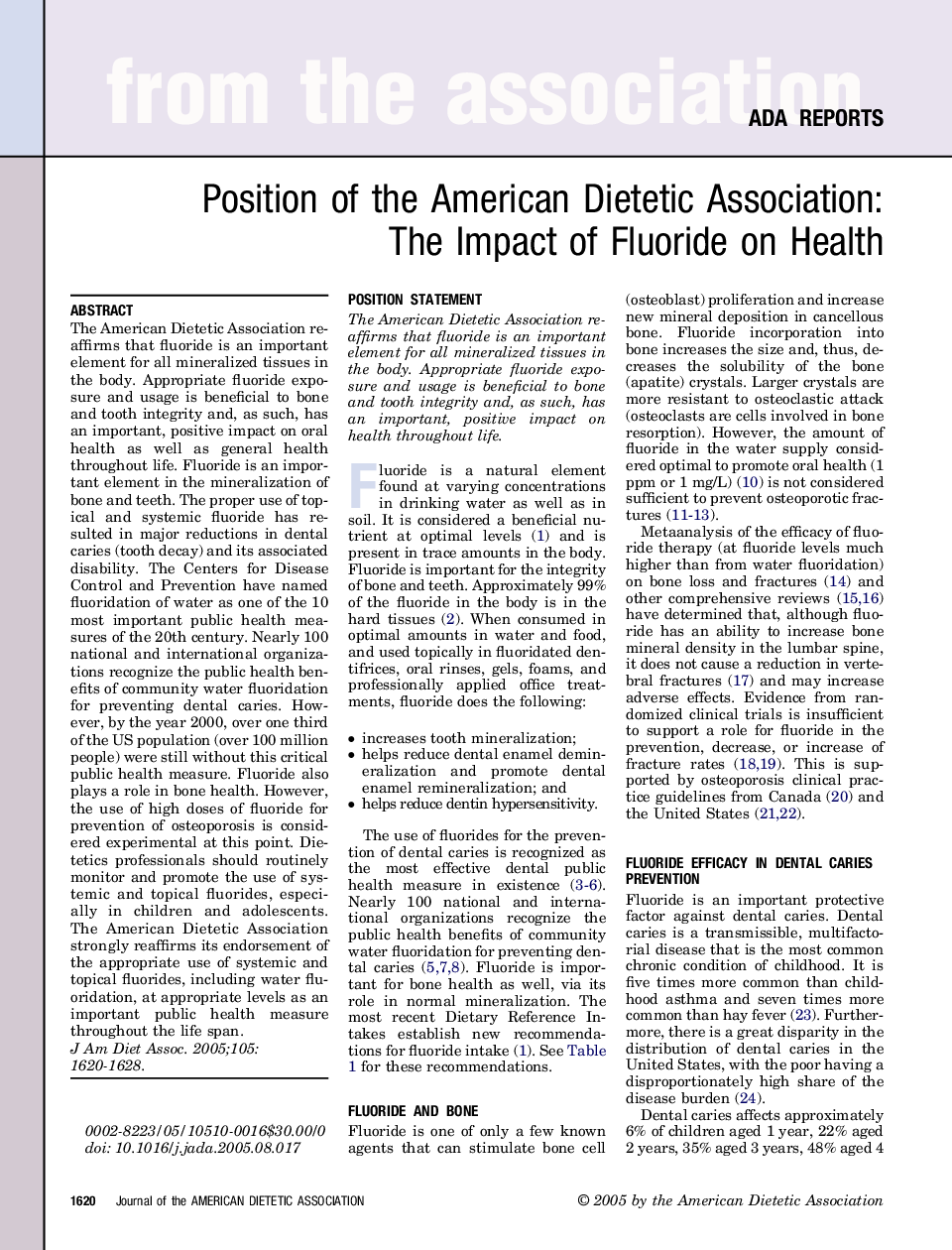| کد مقاله | کد نشریه | سال انتشار | مقاله انگلیسی | نسخه تمام متن |
|---|---|---|---|---|
| 9061844 | 1140082 | 2005 | 9 صفحه PDF | دانلود رایگان |
عنوان انگلیسی مقاله ISI
Position of the American Dietetic Association: The Impact of Fluoride on Health
دانلود مقاله + سفارش ترجمه
دانلود مقاله ISI انگلیسی
رایگان برای ایرانیان
موضوعات مرتبط
علوم زیستی و بیوفناوری
علوم کشاورزی و بیولوژیک
دانش تغذیه
پیش نمایش صفحه اول مقاله

چکیده انگلیسی
The American Dietetic Association reaffirms that fluoride is an important element for all mineralized tissues in the body. Appropriate fluoride exposure and usage is beneficial to bone and tooth integrity and, as such, has an important, positive impact on oral health as well as general health throughout life. Fluoride is an important element in the mineralization of bone and teeth. The proper use of topical and systemic fluoride has resulted in major reductions in dental caries (tooth decay) and its associated disability. The Centers for Disease Control and Prevention have named fluoridation of water as one of the 10 most important public health measures of the 20th century. Nearly 100 national and international organizations recognize the public health benefits of community water fluoridation for preventing dental caries. However, by the year 2000, over one third of the US population (over 100 million people) were still without this critical public health measure. Fluoride also plays a role in bone health. However, the use of high doses of fluoride for prevention of osteoporosis is considered experimental at this point. Dietetics professionals should routinely monitor and promote the use of systemic and topical fluorides, especially in children and adolescents. The American Dietetic Association strongly reaffirms its endorsement of the appropriate use of systemic and topical fluorides, including water fluoridation, at appropriate levels as an important public health measure throughout the life span.
ناشر
Database: Elsevier - ScienceDirect (ساینس دایرکت)
Journal: Journal of the American Dietetic Association - Volume 105, Issue 10, October 2005, Pages 1620-1628
Journal: Journal of the American Dietetic Association - Volume 105, Issue 10, October 2005, Pages 1620-1628